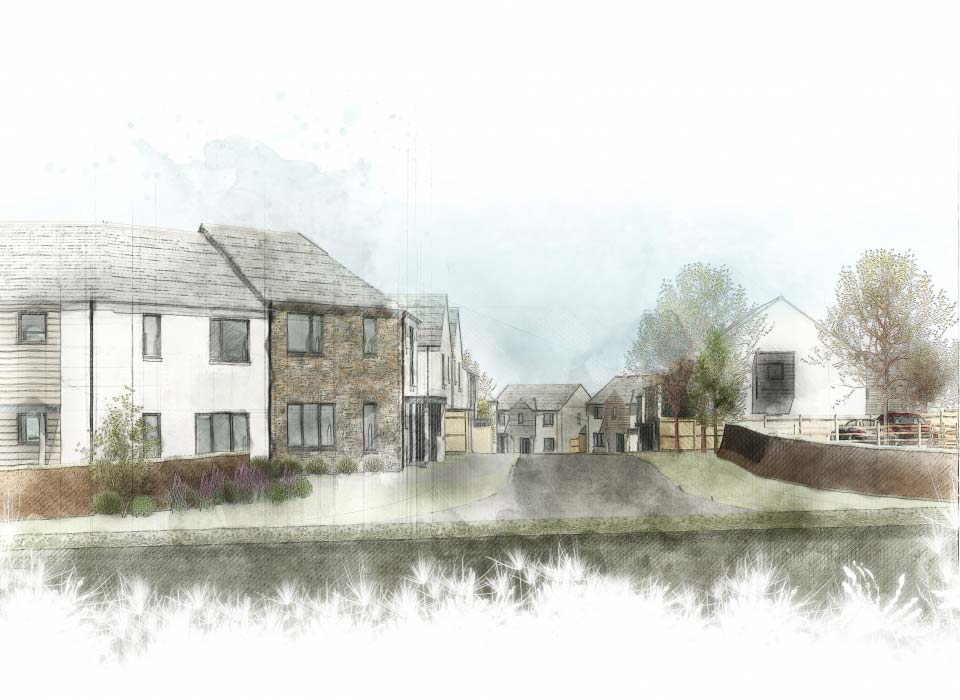By Mark Dawes, Managing Director, CAD Architects
The Community Infrastructure Levy (CIL) is a planning charge which was introduced as a tool for local authorities in England and Wales to help deliver infrastructure to support the development of their area.
Although it came into force on 6 April 2010 not all councils have so far introduced the levy. However, Cornwall Council will begin charging the levy from 1st January 2019. It is therefore now vital for landowners and developers in Cornwall to have an understanding of how this new system works.
Why is the CIL needed?
The legislation recognises that new development brings more people to an area, which in turn increases the demands on local infrastructure. The CIL gives local authorities the funds to help improve local infrastructure such as transport, schools, hospitals and community facilities. (In many cases, the CIL will replace the Section 106 Contributions by which developers have previously contributed to infrastructure costs.)
What types of project are affected?
A development is liable for CIL if it:
creates a new dwelling of any size; or
creates over 100sqm of gross internal floorspace (new build), before making deductions for existing floorspace that is to be demolished; and
involves new buildings or floorspace into which people normally go.
Are any developments exempt?
Government guidance lists those types of development that may be exempt from CIL with the main categories being:
· Social Housing
· Self-Build Developments
· Charitable Projects
How is the CIL charged?
CIL takes the form of a tariff per square metre of additional floorspace created by the project. The level of the tariff is set by the local authority. It is based on the need for infrastructure identified through infrastructure planning. It is also tested to ensure that it will not affect the viability of developments. Each local authority publishes their local levy rates in a CIL Charging Schedule, so that developers can factor this into the cost of any new projects.
Who is responsible for paying the CIL?
Landowners are ultimately liable for the levy, but anyone involved in a development may take on the liability to pay. For example, the developer can assume the responsibility for paying the levy, providing they have completed the necessary paperwork. If at any point the local authority finds that it is unable to collect the levy from the party that has assumed responsibility, the payment can default back to the landowner.
When does the CIL become due?
It is important to note that CIL becomes chargeable at the commencement of a new development. The CIL can be paid in instalments, provided the necessary paperwork has been completed in advance to allow this to happen.
What is the process for implementing CIL on a new development?
Each local authority will publish their specific approach for CIL, but broadly, the key stages are as follows:
· When planning permission is applied for, developers must provide Additional Information Forms that will allow the local authority to assess the CIL requirement.
· At the same time, forms must be completed detailing who is assuming responsibility for payment of CIL.
· Once planning permission has been granted, the local authority will issue a Liability Notice to the relevant parties detailing how much CIL is payable. (If you think the amount of CIL has been incorrectly calculated, there is a mechanism for requesting a review).
· Before the development commences, you must submit a Commencement Notice to the local authority so that they can calculate when payments fall due.
· The local authority will then issue a Demand Notice, setting out the amount of CIL payable, payment options and due dates.
Making CIL part of your plans
The above notes are by no means a comprehensive guide to the Community Infrastructure Levy but are intended to give a brief overview of its key features.
You can see from the above how important it is to ensure that CIL is factored into your plans and costings for any new development.
At CAD Architects, we are highly experienced at taking new build projects from brief right through to completion. We will assemble a team that gives you all the specialist advice you need, including pointing you towards expert guidance on specific areas such as the Community Infrastructure Levy.
When you work with CAD Architects, this is one of the many ways in which we help streamline the process and take the stress out of new build projects.
